This is a wee story I wrote after walking the Lake Waikairemoana track with my Father in 2007. My father was an avid tramper here in NZ, regularly flying down here from Scotland to knock off another of his Top Ten Tramps. This one, in transpired, was to be his last. I am glad that I walked it with him.
The published PDF can be seen here.
Black Swans & Brown Trout
A Short Walk Around Lake Waikairemoana
Whatever your historical standpoint or perspective on the New Zealand Wars, there can be no denying that Te Kooti knew where to hide. Pick up a map of the North Island and just above Hawkes Bay you will notice a small lake nestled inland within a bed of green and attached to the interior of the island by what looks like a long meandering umbilicle cord. This is Lake Wiakairemoana in Te Urewera National Park, one the last remaining areas of original native forest in the North Island and historic homeland of the Tuhoe people. In his marauding heydey Te Kooti hid out in these ranges and befriended the locals while Colonist troops floundered their way through the bush in pursuit being picked off by Te Kooti’s rifles. Nowadays the forest is thankfully a touch more peaceful and there is hopefully not much chance of getting clipped by a rogue sniper, unless of course you are a possum.

The trip to the lake begins with a drive, a long one for us as we started in the Bay Of Islands. 10 hours door to door. However seeing as the lake is only 3 hours from Rotorua I guess that would make a more obvious choice of base. I was doing this walk with my Father who was visiting from Scotland and a friend of his, Lindsey, from Christchurch. We had scheduled 3 1/2 days for the walk but it is easily doable in 3. In fact we met people en route who were doing it in 2. We had decided to take it relatively easy in order to give us time to enjoy our surroundings, which was after all why we were there. We had also opted for what some might call the soft option but I like to think of as the more civilised approach and had arranged for our packs to be delivered from hut to hut by the water taxi. Not only did this make the walking a lot easier but it also allowed us the luxury of having a nice bottle of Pinot Noir each night to compliment our lovely cuisine de tramp.
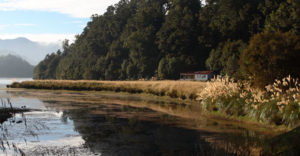
The first section of the walk is by far the hardest, as soon as you are off the water taxi you are climbing, easily at first but then the track changes as you get into the bush and begin to follow the ridge line towards Panekiri Bluff. It is very uneven under foot with roots across the path and some big irregular steps needed but the views whenever you get them are breathtaking. We had miraculously chosen 3 picture postcard days to undertake this walk and as such were rewarded with clear views right across the National Park. Once the hardship of Panekiri has been conquered, the walk follows the lake, meandering around the many inlets and bays, occasionally climbing over a small saddle or two but generally just gently undulating along through variations of fern groves, beech and podocarp forests. It is an exceptionally pleasant walk and although the path is fairly irregular at points it is pretty well maintained with a good squad of DOC Rangers carving new steps and looking after the bridges.
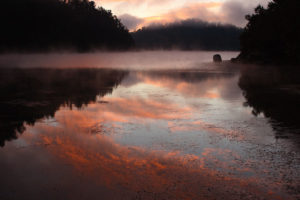 Each morning began in a stunning fashion with the lake reflecting the deep pinks of the dawn as the mists ran off the land and scurried around the waters surface. They would cling to the lake and the forest until long after the sun was up, warming the air, making for an eerily beautiful start to the day. In fact the Tuhoe people used to be referred to as “The Children Of The Mists” and after one morning by the Lake one can understand why. As the day advanced the lake waters became crystal clear and every now and then it was possible to glimpse a nice fat Brown Trout slowly cruising the shallows, causing me to wish I’d had the foresight to pack a telescopic fishing rod. The lake is renowned in the area for it’s trout fishing and can get quite busy in the height of summer, however during our walk the only thing there in numbers were the black swans.
Each morning began in a stunning fashion with the lake reflecting the deep pinks of the dawn as the mists ran off the land and scurried around the waters surface. They would cling to the lake and the forest until long after the sun was up, warming the air, making for an eerily beautiful start to the day. In fact the Tuhoe people used to be referred to as “The Children Of The Mists” and after one morning by the Lake one can understand why. As the day advanced the lake waters became crystal clear and every now and then it was possible to glimpse a nice fat Brown Trout slowly cruising the shallows, causing me to wish I’d had the foresight to pack a telescopic fishing rod. The lake is renowned in the area for it’s trout fishing and can get quite busy in the height of summer, however during our walk the only thing there in numbers were the black swans.
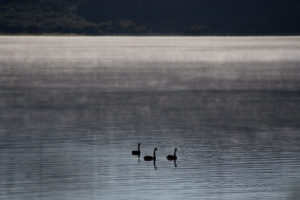 All along the track there were always a couple of them gracefully sliding along, giving us a wary glance as they soporifically paddled the shimmering water. Now I know that Black swans are fair game in this country and some people like to refer to them as pests, but there is no getting away from the fact that they are exceptionally graceful birds as they glide, regally around the lake.
All along the track there were always a couple of them gracefully sliding along, giving us a wary glance as they soporifically paddled the shimmering water. Now I know that Black swans are fair game in this country and some people like to refer to them as pests, but there is no getting away from the fact that they are exceptionally graceful birds as they glide, regally around the lake.
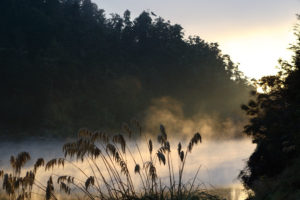
Te Urewera National Park is 2,127 square Km in size and was created in 1954 in order to preserve this magnificent native forest for posterity. Due to it’s geographical isolation it was one of the last areas to come under British control and as we walked it was easy to see exactly why. The track occasionally leaves the lakeside and heads through dense native forest giving us small taste of what it must have been like for the men in red coats. Fortunately for us, however, there is now a well defined path to follow and an absence of fanatical Colonels, whipping us along. Maurice Shadbolt, in his book “The Season Of The Jew” writes of his English hero, Captain Fairweather, meeting the Tuhoe at a lake high in the mountains and it is only too easy to imagine it being Lake Waikairemoana.
Whatever the historical truth, however, there is no getting away from the fact that this is a naturally beautiful and deeply mystical place. The forest is centuries old and untouched in parts and one can get a good sense of what the majority of New Zealand must have been like in pre European times. It is also an exceptionally picturesque and relatively easy walk with good accommodation throughout.

As we left after our 3 1/2 days and I commenced my 10 hour drive back home, I had cause for reflection. I had read somewhere that the name Urewera came from a legend that an old Maori Chief had, one night, rolled over in his sleep into a camp fire and had burned a certain delicate appendage. Upon my return I looked further into this and discovered that Urewera does in fact mean Burnt Penis. Luckily for us the only burnt appendage this time was my fathers nose.
.

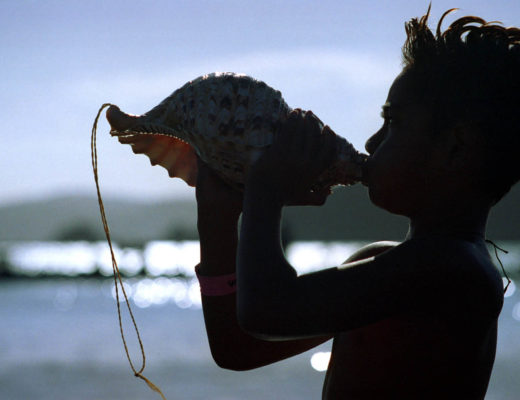
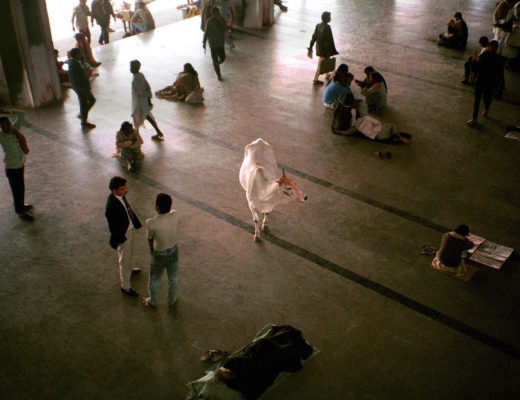
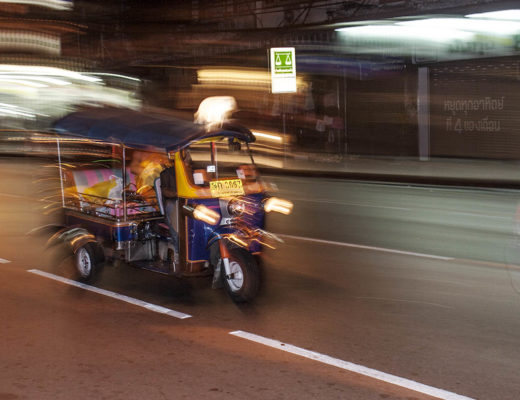
No Comments